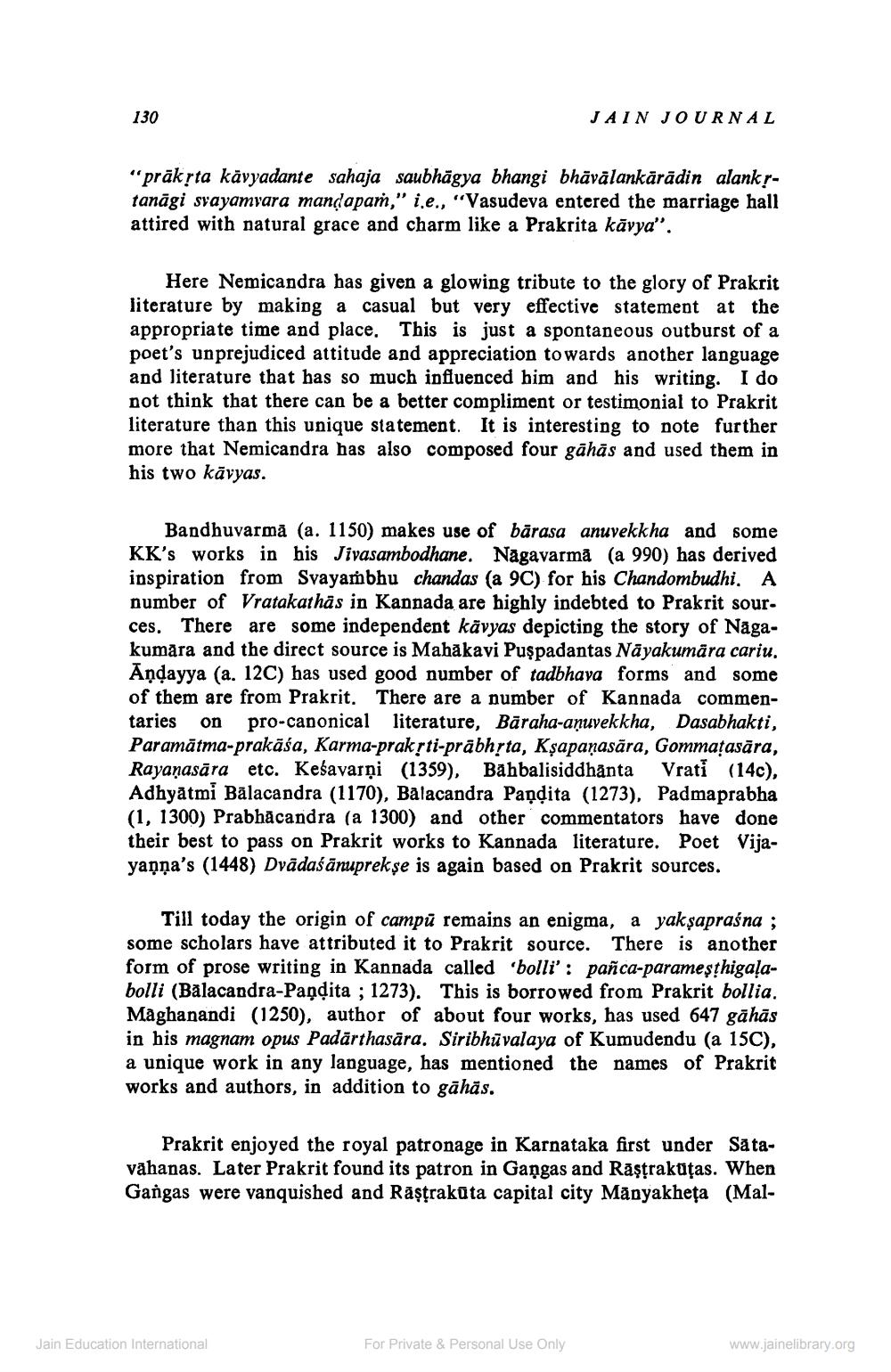________________
130
JAIN JOURNAL
"prāksta kävyadante sahaja saubhagya bhangi bhāvālankārādin alankrtanägi svayamvara mandapaṁ," i.e., "Vasudeva entered the marriage hall attired with natural grace and charm like a Prakrita kāyya".
Here Nemicandra has given a glowing tribute to the glory of Prakrit literature by making a casual but very effective statement at the appropriate time and place. This is just a spontaneous outburst of a poet's unprejudiced attitude and appreciation towards another language and literature that has so much influenced him and his writing. I do not think that there can be a better compliment or testimonial to Prakrit literature than this unique statement. It is interesting to note further more that Nemicandra has also composed four gāhās and used them in his two kāvyas.
Bandhuvarmă (a. 1150) makes use of bārasa anuvekkha and some KK's works in his Jivasambodhane. Nagavarma (a 990) has derived inspiration from Svayambhu chandas (a 9C) for his Chandombudhi. A number of Vratakathās in Kannada are highly indebted to Prakrit sour. ces. There are some independent kävyas depicting the story of Nagakumāra and the direct source is Mahakavi Puşpadantas Nāyakumăra cariu. Āņdayya (a. 12C) has used good number of tadbhava forms and some of them are from Prakrit. There are a number of Kannada commentaries on pro-canonical literature, Bāraha-aņuvekkha, Dasabhakti, Paramātma-prakāśa, Karma-praksti-prābhrta, Kșapaņasāra, Gommatasara, Rayanasāra etc. Kesavarņi (1359), Babbalisiddhanta Vrati (14c), Adhyatmi Balacandra (1170), Balacandra Pandita (1273), Padmaprabha (1, 1300) Prabhācandra (a 1300) and other commentators have done their best to pass on Prakrit works to Kannada literature. Poet Vijayanna's (1448) Dvādaśānuprekse is again based on Prakrit sources.
Till today the origin of campū remains an enigma, a yakşapraśna ; some scholars have attributed it to Prakrit source. There is another form of prose writing in Kannada called 'bolli': pañca-parameşthigalabolli (Balacandra-Paņdita ; 1273). This is borrowed from Prakrit bollia. Maghanandi (1250), author of about four works, has used 647 gāhās in his magnam opus Padārthasara. Siribhūvalaya of Kumudendu (a 15C), a unique work in any language, has mentioned the names of Prakrit works and authors, in addition to gāhās.
Prakrit enjoyed the royal patronage in Karnataka first under Satavāhanas. Later Prakrit found its patron in Gangas and Raşțraküțas. When Gangas were vanquished and Răştrakūta capital city Manyakheta (Mal
Jain Education International
For Private & Personal Use Only
www.jainelibrary.org




